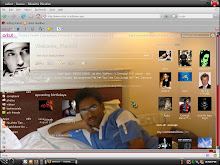
A Lightweight Translation Widget
Website owners and administrators with an international audience looking to provide a translated version of the content available without penalizing the performance of their sites can turn to the Bing Translator Widget. Built on top of the machine translation technology developed by the Microsoft Research Translator team, the widget is designed to streamline the on-demand translation of web-based text with no development efforts or the associated costs, except the investments made in Redmond.
The translation engine is worked on continuously to deliver better quality and more languages.
Click here to get Bing Translator Widget
Putting together a widget specifically designed for your website requires almost no effort on your behalf. Just head over to the Microsoft Translator Widget Beta portal, enter basic information about your website, tweak the few options available and generate the JavaScript code that can subsequently integrate along web-based content.
“Once this code snippet is pasted into an appropriate area of your page, the Translator widget appears on your site to your users in the language their browser is set to. This localization of the widget user interface ensures that your site's audience always sees "Translate this page" in their language and thereby are able to kick-off the translation. The translator team is also planning to add an "automatic" translation functionality, where you can set the widget to auto-translate the page into the visitor's browser language upon arrival.”
Improve Traffic By Submitting Feeds To Bing Search Engine
My site analytic statistics show i drive 80% blog traffic from Google search engine for my blog (http://praveenkumarg.blogspot.com) .Since Bing is also evolving you can focus on Bing to get some good traffic from Bing.But in Bing my blog appears somewhere.
This could be happening because I never submit my website to Bing search engine. I thought to share with how how to do this.
1. Open the Bing submit page http://www.bing.com/docs/submit.aspx
2. Type in the characters from picture as shown below.
3. There are couple of options that you can use to enter the website URL
To submit your Website Or Blog Feeds: Type in your RSS feed URL. I have created my RSS feed URL using FeedBurner with full content in the RSS feed.
Note:
My Feedburner Address For
Blogger Hacks: http://feeds.feedburner.com/blogspot/oqio
Computer Tips & Tricks : http://feeds.feedburner.com/RapidshareDownloadLinks
4. Click Submit button.
5. Once you submit you website or blog this will go to Bing queue and after some time Bing will visit to crawl your website or blog.
I hope it will your website or blog will drive some good traffic from Bing in near future.
We always hear that Google Adsense has a sophisticated system to detect the invalid clicks, and result in termination of the cheaters' account. But, how can Google do that? In this post, I summarize those ways that Google depends on to detect whether the clicks on your site are invalid or not. Google will not first ban your account immediately. Rather, they will first flag your account and Google will keep a closer eye to your account. In some occasion, they may send you a warning letter to notify your situation but sometimes not.
1. IP Address
It is the easiest and must be recognized by everyone. If those clicks on your ads are originated from the same IP Address as the one used for accessing your AdSense account, your account is flagged.
2. Click Through Rate (CTR)
Normally, Click through Rate should not exceed 10%. Otherwise, Google will flag your account. For your information, normal CTR should ranges from 0.5% - 10%.
3. Physical Location
Google has good tracing software and technology.They can trace traffics origin down to the small town. So, using different computers with different IP address does not secure anything. So, don't try to click your ads in various Internet cafes. That will kill you.
4. Cookies
Most home users do not use static IP Address for Internet connection. In most cases just disconnect and reconnect will give you a new IP Address. But don't forget, Google has set cookies on your computer. They can trace these cookies and see whether they originate from the same computer.
5. Click Pattern 1
It is also suspicious when people click on their clicks and then run away immediately (hit-and-run). But normally, people will surf for a while inside your pages and then click on the ads they want.
6. Click Pattern 2
Why this computer / IP address / person is so trigger-click-happy on this particular website but never click on the ads on other sites?
7. Click Pattern 3
And why is it that people accessing these sites direct (type-in URL or from bookmark) tend to be very active ad-clickers compared with those referred from search engine or other sites?
8.Other Google Services
Apart from Google Adsense, Google also provide a series of services to us. Don't just think that it is safe if you do not log in your adsense account and click on your ads. What other Google services do they provide to us?Here are some: Gmail , Google Earth, Google Calendar, Google Search, Google Toolbar, Google Talk, Google Sitemap, Google Desktop, Blogger, or even Youtube .
9. Search Engine Ranking
Your website is not indexed on any search engine, not linked by any prominent website, but get consistently high traffic? How come people can access your website and click your ads? That will make Google to smell a rat.
10. Webpage design
How about the "Please click a link below" or "donate us by clicking the ads"? These kinds of encouragement is not in line with Google's TOS. Google can use their winning search engine, or even human eyes to check your sites from time to time.




